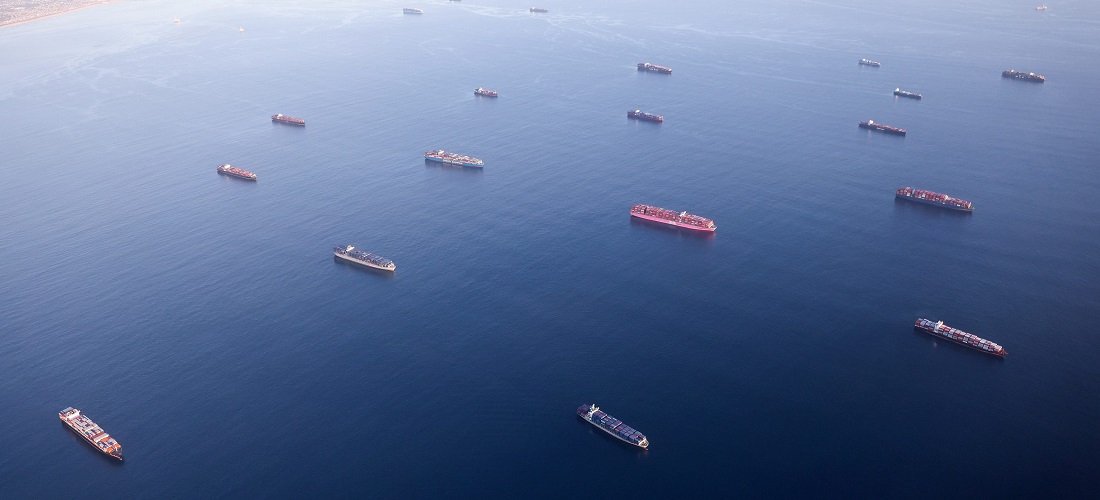
Slowing US growth expected to increase trans-Atlantic blanks
Jan, 05, 2023 Posted by Gabriel MalheirosWeek 202301
The trans-Atlantic headhaul trade from Europe to North America lived up to its “stable” moniker last year, with demand and rate levels continuing to grow and ongoing congestion keeping rates from entering the type of free fall in prices that took place in the trans-Pacific and Asia–Europe lanes. But as port congestion eases on the US East Coast and in North Europe, capacity freed from the bottlenecks will add to the fast-growing vessel supply at a time when economic weakness is dragging down demand, and rate levels are sure to follow. Trans-Atlantic blanks might be one of the solutions adopted.
The chronic congestion at US West Coast ports saw shippers earlier this year switching their Asian imports from West Coast to East Coast gateways. But instead of improving the cargo flows, the sudden rise in volume quickly overwhelmed ports such as Savannah and Charleston.
A combination of rising US imports from North Europe — up 2.4 percent year over year in the first 10 months of 2022, according to PIERS, a Journal of Commerce sister product within S&P Global — and growing volume from India to supplement imports from a locked-down China competed with Asian cargo for berth and inland logistics space on the US East Coast.
This resulted in bottlenecks and lengthy delays from a ship’s arrival at outer anchorage to the delivery of containers to inland distribution centers. The port congestion absorbed capacity and limited access to space, forcing both spot and contract rates on the trans-Atlantic trade to record levels.
Average spot pricing from North Europe to the US East Coast came down after reaching a record high of $8,171 per FEU in May, but in mid-December, spot rates were still up 12.9 percent year over year at $6,425 per FEU, according to data from rate benchmarking platform Xeneta. Long-term contract rates peaked at $6,026 per FEU in early November and had only fallen to $5,954 per FEU in mid-December.
US demand for European goods largely stagnated through the second half of 2022, despite a weakening euro and signs of cargo owners shifting sourcing from China and its endless wave of COVID-19 lockdowns to places like India and Turkey. Despite the flattening of demand, port congestion on both sides of the Atlantic kept average spot rate levels consistently high, making the trans-Atlantic a hugely profitable trade for carriers and leading to an influx of capacity to take advantage of the elevated prices.
That picture is changing, however. As the easing of congestion on the US East Coast and in North Europe releases capacity back into the market, shippers can expect increasing numbers of trans-Atlantic blanks as carriers try to match their excess tonnage with the falling volume.
The stability of the trans-Atlantic hinges on the type of products moved on the trade lane — i.e., those shipped in large and regular quantities, such as machinery, automobiles and related parts, pharmaceuticals, chemicals, and a wide assortment of food and beverages.
While the mix of products will remain roughly the same going forward, great uncertainty revolves around fast-rising inflation that will almost certainly slow growth in US demand and bring an end to the trans-Atlantic bull run. With a looming oversupply of capacity operating on the trade, it’s just a matter of time before vessel utilization levels and rates begin to fall with trans-Atlantic blanks.
Source: JOC
To read the full original article, access: https://www.joc.com/article/slowing-us-growth-expected-increase-trans-atlantic-blanks_20230104.html
-
Ports and Terminals
Jul, 21, 2023
0
Authorities seize yet another 28.5 kg of cocaine in Brazil’s Paranagua Port
-
Other Cargo
Feb, 25, 2025
0
Brazil Auto Parts Industry Posts $1.4 Billion Trade Deficit in January 2025
-
Blog News (ENG)
Jul, 06, 2023
0
Vports and TVV still have to reach deal on contract readjustment
-
Automotive
Aug, 07, 2024
0
Brazilian Auto Exports Decline, but July Shows Promise



